The Production of Time and Space
|
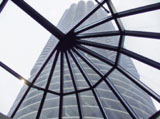 |
At first glimpse there is almost no public space in the city. Space, architectural space is always private and has limited access. The filmaker has to learn this as soon as he takes out a professional looking camera. On the other hand, every private space is a public space to a certain extent. The filmmaker, therefore has to find his role that will open the social or architectural space he wants to photograph in. It's here where the game starts. |
 |  |
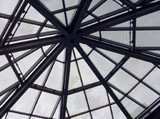 |
Space in Film is a representation of space. The travelling camera, the shots of different angles of the same place create the illusion of space. The hand held camera might even give the impression of a body, the filmmaker's body, the spectator's body moving through space. The impression could even become so physical that some spectators react with dizzieness, agoraphobia, claustrophobia. However, the strongest spatial perception in film happens if the space goes beyond the frame, if the perceived space becomes wider than the frame. |
 |  |
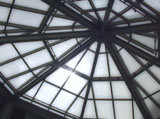 |
To open up a terrain, the filmmaker has to pretend that he occupies this terrain already. The easiest way to get into a space is to take the space as representational and to claim that the product is going to be representational, too. The owner of a building will willingly show off the treasure of his if the filmmaker is important enough and if he will show the magnitude of the owner to other people. |
 |  |
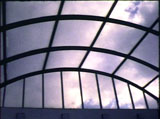 |
Dear Ben,
If you say my project is about the White American Dream, you might be right. However, every space is a restricted area. Trying to enter a space, therefore, is always a game of power and make-believe. Trying to make a movie about Black or Latino-American dwellings would be an even more intriguing exploration and trying out of power and making believe than my attempt to get a glimpse through the looking glass.
Something to learn from this spot: stop feeling guilty and trying to be politically correct. A kiss from the Nietzschean to my dear Wagnerian. |
 |  |
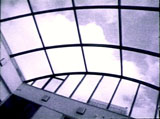 |
As I have to ask for permission, people tend to arrange time slots with the least public traffic for my shooting. Very often it occurs that I am not allowed to photograph any people. I don't think that most people are afraid of having their soul taken away, it is rather that they think of their image in terms of currency value. A lot of people expect to be paid for their picture. However, this seems to be a result of a power relationship, too. If I would take pictures for a BBC documentary or for a famous director, people would love to be featured.
It's easier to record sounds of people, though. |
 |  |
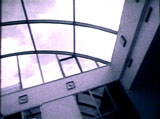 |
Scanning the city for glass architecture, I perceived the city in a very different way. It has prevented me from shooting the exotic or staying in the tourist point of view. I am still the foreigner, the "non-resident alien." The exotic: the American newly built dwelling with the 19th century outfit. |
 |  |
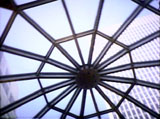 |
The living body, as Henri Lefebvre sees it, should not be reduced to the recipient and transformer of “minute quantities of energy”- the body is a reservoir of massive energies. Public institutions are very aware and afraid of the potential explosive energies of the body which is “always in revolt.” Every wrong move of the body might thread the picture of the representational space. On the other hand, plain representational space is dead space, space without spatial practice.
I get permission, I go into the building, I use my camera as a tool and the letter of recommendation as a shield and I behave in the strangest way. Has this already launched a spatial practice on my part? |
 |  |
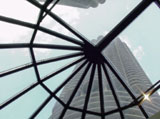 |
Related to the representation of space in Modern Art is the desire of modernity. Photography and filmmaking had a strong impetus on the architecture of Modernity. Today, in the age of electronic media, there seems to be a stronger concern about the space of the body than about the space inhabited by the body. The Postmodern desire for the body forgets about the spatial practice of the body. |
 |  |
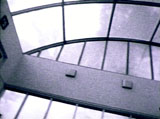 |
This project has not been undertaken to show something I already know. First of all, it is a research, a visual research and a practical research, a camera-guided research. The goal is to find something out about space and architecture and not to make an argument. Also, I am not trying to represent real spaces though it is important to me, both, to find real places and to give glimpses of the real, social space. |
 |  |
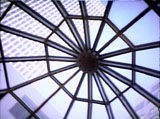 |
What you read here is no more than a sketch, yet. The production of time and space in the sense of Lefebvre, however, is only going to become successful in the case that not only the product but the filmmaker will be occupying the space he pretends to already inhabit. In that sense, the filmmaker will try to claim his space and he will try to claim his filmmaking as spatial practice. |
| back |



























